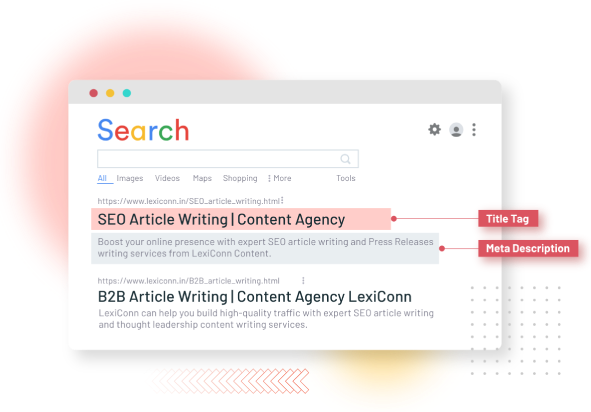

Ranking high on Google is a goal for anyone creating online content. The benefits are obvious—securing the top spot for a keyword leads to a steady stream of free traffic. Organic traffic is valuable because visitors are already looking for what you offer, making them more likely to convert.
So how do you get your SEO article to that #1 spot? Simply writing "quality content" isn’t enough, a phrase you’ve likely heard countless times. But what exactly does "quality" mean when it comes to SEO? Let's break it down and understand how to reverse-engineer Google’s ranking system to boost your chances of success.
In this blog, we’ll cover how to write content that both search engines and humans love, techniques to write an excellent SEO article, and a keyword research hack to uncover easy-ranking opportunities.
Let’s dive in!
Let’s understand why organic traffic is so valuable. Unlike paid ads, where you pay for each click, organic traffic flows naturally once your SEO strategy is on point. Best of all, it’s free and highly targeted. Your visitors are actively looking for what you provide, which makes them more likely to engage and convert.
Optimizing for organic traffic isn't just a smart move—it’s the most cost-effective way to build sustainable growth.
Choosing the right topic and keywords is key to ranking well on Google. While topics like “best smartphones” may seem appealing, they are highly competitive and hard to rank for if your site is new.
Instead, focus on topics that are:
Here’s how to find those gems:
Uber Suggest Keyword Research is a lifesaver when it comes to finding low-hanging fruit for content ideas. Here’s a quick guide:
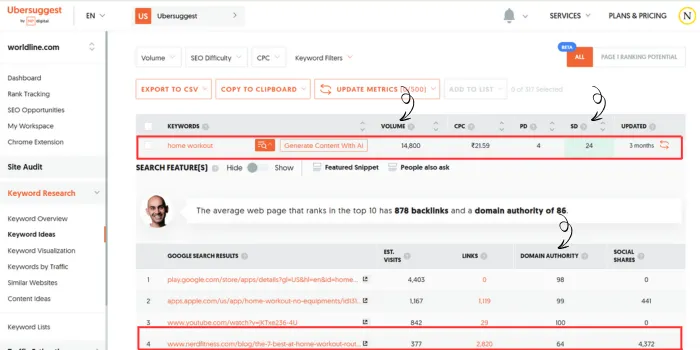
Now that you’ve got your topic and keywords, it’s time to create content that ranks. Keep these tips in mind:
Search engines scan your content for structure. Use headers (H1, H2, H3) to organize your ideas, and make sure each section flows naturally.
People go to Google for answers. Include FAQs or address common questions directly in your content to keep readers engaged.
Break up your content into short paragraphs, add bullet points, and visuals. Keep the tone conversational, like you’re talking to a friend.
Avoid keyword stuffing—it’s outdated and penalized. Instead, use your keywords naturally within the text and in strategic places like:
Here are a few tricks to help your content SEO rich:
Creating the best content starts with preparation. Think of it like planning a journey—without a map, you're likely to get lost. A strong plan lays the foundation for creating content that engages readers and ranks high on search engines.
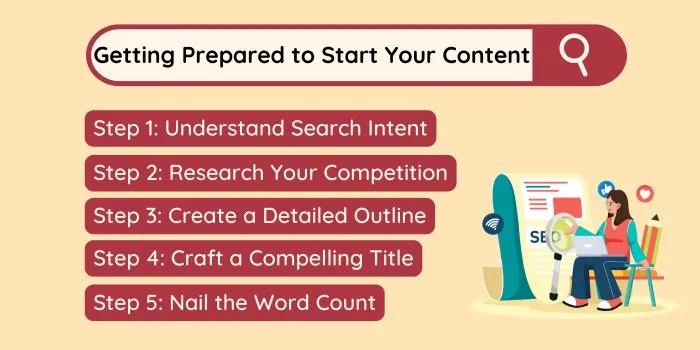
The first step is identifying the search intent behind your target keyword. For "Healthy Eating for Busy Professionals", the search intent is likely informational since users are looking for advice or tips on how to maintain a healthy diet despite a busy lifestyle.
A quick search for "Healthy Eating for Busy Professionals" reveals valuable insights. The top-ranking articles typically cover tips, meal prep ideas, and quick recipes. For example:
However, lower-ranking articles may lack depth or focus on just one aspect, like recipes without offering broader tips on managing time. This highlights the importance of addressing the full spectrum of the topic.
Based on your research, create an outline by collecting the best subtopics from competitors. For example:
You can expand the list further by checking Google’s "Related Searches" and "People Also Ask" sections, such as:
These questions become key points to cover in your content.
Your title should immediately convey the value and incorporate your main keywords. For example: "Healthy Eating for Busy Professionals: Easy Meal Prep and Quick Recipes for a Busy Workday."
Finally, check the word count of the top-ranking articles. If the average article is around 1,800 words, aim for a similar length or slightly more while making sure that the content remains engaging and easy to digest.
Getting started with writing your blog post can feel like the hardest part, but don’t overthink it! Your introduction sets the stage, so make it count. It needs to grab attention and show readers you’re the real deal.
Skip the fluff—no one needs a history lesson when they’re here for solutions. If someone’s looking for ways to invest in digital real estate, dive right in with actionable insights. That’s how you keep people hooked.
Once you’ve nailed your intro, it’s time to dive into the body of your content. As you work through your sections, focus on staying clear and concise.
Speaking of making things reader-friendly, formatting is key. Short paragraphs, bullet points, and visuals make your content easier to digest. And don’t forget to sprinkle in a few authoritative links—this shows both readers and Google that you’ve done your homework.
Before hitting publish, give your content a final polish. Tools like Grammarly can help with grammar and spelling, but it’s always smart to get a fresh set of eyes on your work. You’d be amazed at how much someone else can catch!
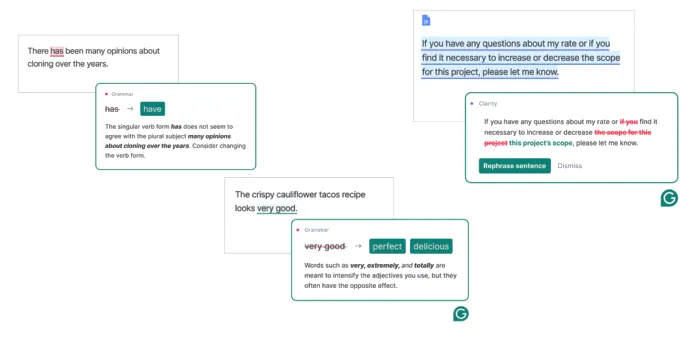
Lastly, keep it simple. Aim for an eighth-grade reading level so your content is accessible to everyone. Short sentences, simple words, and a conversational tone work wonders.
Once you’ve checked all the boxes, upload your content, add some images or videos, and voila—your blog is live and ready to rank!
You’ve put in the work—images, videos, lists, and short paragraphs—and it’s all making a difference. But the content journey doesn’t stop here. There are a couple more things you’ll want to add to your SEO article to really give it that extra edge.
Schema is a special type of code you add to your webpage that helps Google understand exactly what your content is about. Think of it as a map that guides Google through your SEO article, making it clearer and easier for them to index.
Use schema code generating tools like Yoast to generate a schema code. Once it’s all setup, just copy that code to your clipboard. Now, here’s the important part: go into the HTML editor of your WordPress page and paste the schema code right in.
Here are some common types of schema markup that you can use for different content on your website:
Using these schema types helps search engines understand your content better, which can improve your SEO.
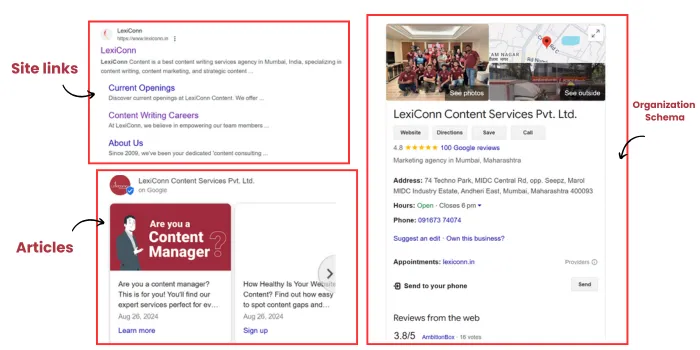
Internal Linking to Boost SEO
Next, don’t forget about interlinking. Find other relevant articles on your site and link to your new SEO article using descriptive anchor text. This tells Google, “Hey, this article about healthy lifestyle links to this new one, so it’s probably about healthy lifestyle too.”
Finally, don't overlook meta titles and descriptions. These appear in Google Search results when someone looks up your topic, making them key for visibility.
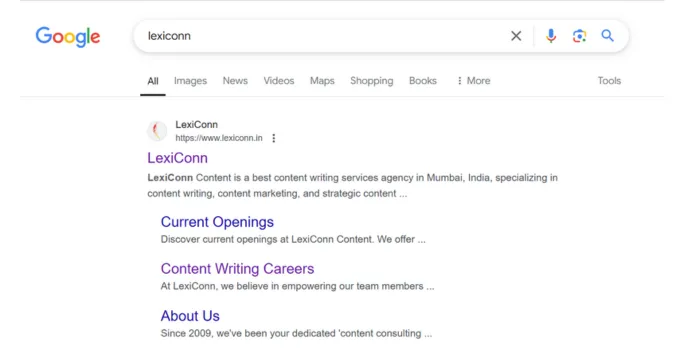
For the title, simply copy the title you wrote earlier for the SEO article. For the description, make sure it’s descriptive, and add in some of those target keywords. That way, when people search, they’ll see bolded keywords that grab their attention.

There you have it! Your SEO article is now fully optimized and ready to be published. From keyword research to crafting engaging content and polishing with SEO tools, every step contributes to building an SEO article that stands out.
If this feels like a lot to handle, Lexiconn is here to help! Our team specializes in creating content that drives organic traffic and boosts your online presence. Whether you’re looking to refine your SEO strategy or craft engaging, high-ranking SEO articles, we’ve got you covered.
Start with a free pilot to experience our content-writing expertise firsthand. We also offer a 30-minute consultation to understand your unique needs and discuss how we can help you achieve your goals. Let Lexiconn be your partner in reaching the #1 spot on Google!
Contact us today and take the first step toward transforming your content strategy.



I have read and accept the Privacy Policy
Read More